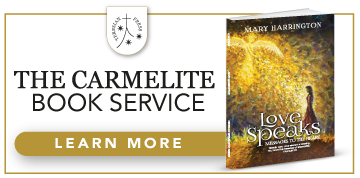Sorry, no records were found. Please adjust your search criteria and try again.
Sorry, unable to load the Maps API.
Yesterday’s announcement by Secretary of State for Education Gillian Keegan that the government is finally going to remove the controversial ‘cap’ on faith schools has been met with resounding cheers from within certain echelons of the UK Catholic establishment. It has though been one of the less interesting or engaging debates of recent decades for the vast majority of Mass-going Catholics – primarily because a dense fog of contradictory arguments have been mustered on both sides of the debate.
The 50% cap refers to a restriction that the government introduced in 2010 in which new faith schools established after that date could only select half their pupils based on religion. Already existing faith schools were not impacted and were allowed to continue to select up to 100% of their intake from pupils of faith.
The cap was introduced in the interests of integration and diversity, but this was argued for – or challenged depending on where you stood – from a number of conflicting philosophical perspectives. For the pro-cap integrationists the change was pretty straightforward – the cap would ensure that faith-based schools could no longer be religious enclaves, or that pupils would be excluded from what were generally accepted as higher quality schools simply because they did not have a religious faith.
From the faith perspective the objections were a little more complex to justify and explain. After all, the cap would ensure that a decent percentage of non-faith pupils would be exposed to a religiously framed education and, if Catholic schools in particular were as exceptionally diverse and inclusive establishments as they were claiming to be, how could a 50% cap on Catholic pupils possibly compromise that?
For its part the Catholic Church in England & Wales opposed the cap vociferously from the outset, even to the extent of saying that the cap was preventing it from opening new schools. The core of the argument was that Canon Law (maybe) prevents Catholic schools from turning away pupils of faith, so new schools couldn’t be constructed with this onerous new remit hanging over them. The Catholic Church promised the government that it was committed to building 125 new schools, but the introduction of the cap left no choice but to put this ambitious commitment on hold.
For a government that had been presiding over a desperately crumbling education system, there is a huge attraction in having faith groups build, run and fund schools – especially as they are evidentially better than their state counterparts. The loss of 125 high performing schools didn’t sit well politically and financially with the Conservatives, and just flagged up the fact that a government otherwise committed to inclusion, diversity and secularism was relying unduly on faith schools to inflate its otherwise dismal education performance statistics.
Secular and non-religious organisations – who by default would actually want the total separation of faith and state education – have argued that allowing faith schools to select up to 100% of their intake from their faith communities has nothing to contribute to a modern, integrated and cohesive society and such schools just fuel social segregation. In what has been just one of many unspoken subscripts in this debate, allowing a 100% faith selection process would also effectively exclude those of no faith who might want their children to benefit from the evidentially superior benefits of a Catholic education, an exclusion which conversely some Catholics feel is only rational.
This contradiction was emphasised very publicly on 9th September 2016 by the Rt Hon Theresa May, in a speech delivered at the British Academy, London, just a few months after she had become Prime Minister. In what is now known as her ‘great meritocracy’ speech, the PM was at pains to put some detail onto her “mission to build a country that works for everyone”. Her speech focussed on education and, of faith education and the 50% cap in particular, she declared that “I want to remove the obstacles that stop more good faith schools from opening.”
The point was well made by the PM that the diversity issue being addressed by the cap was failing because, whereas Catholic schools appealed to parents of other faiths and were thus reasonably diverse, Jewish, Muslim, Sikh or Hindu schools did not have the same wide appeal, and thus their intake was considerable more narrow than their Catholic counterparts.
“Catholic schools are more ethnically diverse than other faith schools,” Mrs May stated in her speech, indicating that for her at least, though undoubtedly for many in the country, the issue was not just about moving the restrictions on Catholic school intakes, but more about opening up the dangerously closed and narrow perspectives of other types of faith schools.
Unfortunately Mrs May’s remarks also illustrate some of the difficulties of trying to see through the fog of the faith education debate. For starters, ‘ethnically’ diverse’ is absolutely not the same as ‘religiously diverse’, and another passing comment in her speech that “there must be strict and properly enforced rules to ensure that every new faith school operates in a way that supports British values” is a mantra of Conservatism that has echoed down the years with some cadence, but with very little clear meaning.
We also see this dichotomy at work in edicts to Catholic educationalists such as those that instruct teachers to “teach the relevance and importance of all faiths equally, but always remembering the core Catholic ethos of the school.”
As any faith leader or religious education teacher will tell you, it’s very frustrating when those who are meant to be handing down clear guidelines are simply passing the ball, and are creating a pretty fundamental dishonesty in obliging teachers to deliver lessons that in many instances contradict the nameplate above the school entrance.
In the not-so-distant past Catholic schools were far less compromised in their religious identity, and more importantly had no scruples about their intent – in simple terms, you went to a Catholic school – yes, you got a good general education but you also got taught a lot of Catholic stuff. Perhaps the nature of Catholic theology and doctrine might have sent you on your way with a slightly increased sense of moral enlightenment compared to your secular school confreres, but it hardly meant you presented a real and present danger to society.
Sadly, the increasing fear within western secular society that religious teaching and even basic religious belief is indoctrinatory has seen educational practices and teaching drift away from a confessional style of religious instruction towards a more generalised and sweeping presentation of beliefs. This ultimately leaves teachers with the burden of what to present and how, and pupils to work out for themselves what they wish to believe in, and what to disregard.
Some say this tension between the demands of secular government and the aspirations of faith communities is an inevitable consequence of faith schools accepting government funding (render unto Caesar), and the situation has only worsened as society itself increasingly comes to view religious belief with increasing suspicion, fear and antagonism – which is understandable given that religious differences have so often been the root cause of deadly societal conflicts.
This goes hand in hand with a new determination in society, and especially at the educational level, to define as morally unacceptable and eradicate anything that might be defined as indoctrination – though of course its advocates remain blind to the reality that inclusivity and diversity are themselves indoctrinations.
In the educational context the fear of unduly influencing young minds is an utter nonsense, as all state-sponsored education is a process of indoctrination – from learning the rules of mathematics, being taught the symbolism of Milton’s poetry or the correct way to bake a cake. It is only when it comes to religious education that the obsession with presenting a full range of contrary narratives kicks in.
Unfortunately in a society where secular and non-indoctrinatory narratives have become compulsory, it is highly unlikely that neither the government nor faith communities will be able to forge a concise and readily understandable policy on the conduct and goals of faith schools. One only has to revisit the proposals for synchronicity in religious education outlined in Theresa May’s ‘Great meritocracy’ speech to see how futile this is.
“We will encourage the grouping together of mono-racial and mono-religious schools within wider multi-racial and multi-religious trusts,” said Mrs May.
“This will make it easier for children from different backgrounds in more divided communities to mix between schools, while respecting religious differences.”
And there is that same contradictory edict again, that is so cherished by the inclusivity generation – we all need to be absolutely the same whilst respecting that we are all intrinsically different.
Surely a far simpler, and far more honest proposition would be the converse – we all need to celebrate and respect our differences, precisely because we are intrinsically different?
Translated onto the school signboard this means no uncomfortable and intrinsically dishonest declaration that a Catholic school respects equally all faiths, no faiths and endeavours teach all its pupils a bit of everything as instructed by the government, but still somehow manages to keep faith with its founding Catholic ethos.
A similar honesty from government would avoid statements that say we recognise the uniqueness, outstanding quality and social contributions of Catholic schools, and yet that’s why we’ve been determined to limit their ethos, restrict their faith intake and run a heavy secular marker pen through their teaching programmes.
Putting aside all the incidental and contradictory verbiage that’s been exercised recently about keeping or dropping the faith schools cap, the core challenge for both the government and our faith communities going forward is that neither side is going to accept compromises, and neither should they because this leaves schools, teachers and their pupils with a confused and ill-constructed mess.
For those in faith-based education the dilemma is whether or not we can continue to provide non-indoctrinatory education to pupils of all denominations and still in all sincerity include the word ‘Catholic’ in a school’s name, or whether we should strike out for a distinctive form of unambiguously Catholic instruction that would justify pupil selection on religious grounds (though we would need to ensure that selection on religious grounds doesn’t add to social injustice by favouring the best and most wealthy students).
One thing is for sure, the dropping of the 50% cap on faith schools effectively gives the green light to the creation of more uncompromisingly Catholic schools, which has been one of the unspoken objectives of critics of the cap from the outset. That sorted, it is hoped that newly-opened Catholic schools, confident of their faith foundations, can address the equally profound problems of creating educational opportunities for the most marginalised and disadvantaged of children, from the widest possible range of ethnic and economic backgrounds.
In doing so we could all celebrate the return of Catholic education to its founding principle – that of giving a voice to the voiceless.
Joseph Kelly is a Catholic publisher and theologian
Pic: Education Secretary Gillian Keegan visits The Cardinal Vaughan Memorial School in West London. © Mazur/cbcew.org.uk
NOTE: the government decision to drop the cap remains a proposal only, and is subject to the result of a 12 week public consultation process. See details here: https://consult.education.gov.uk/faith-schools-policy-team/faith-school-designation-reforms/
































